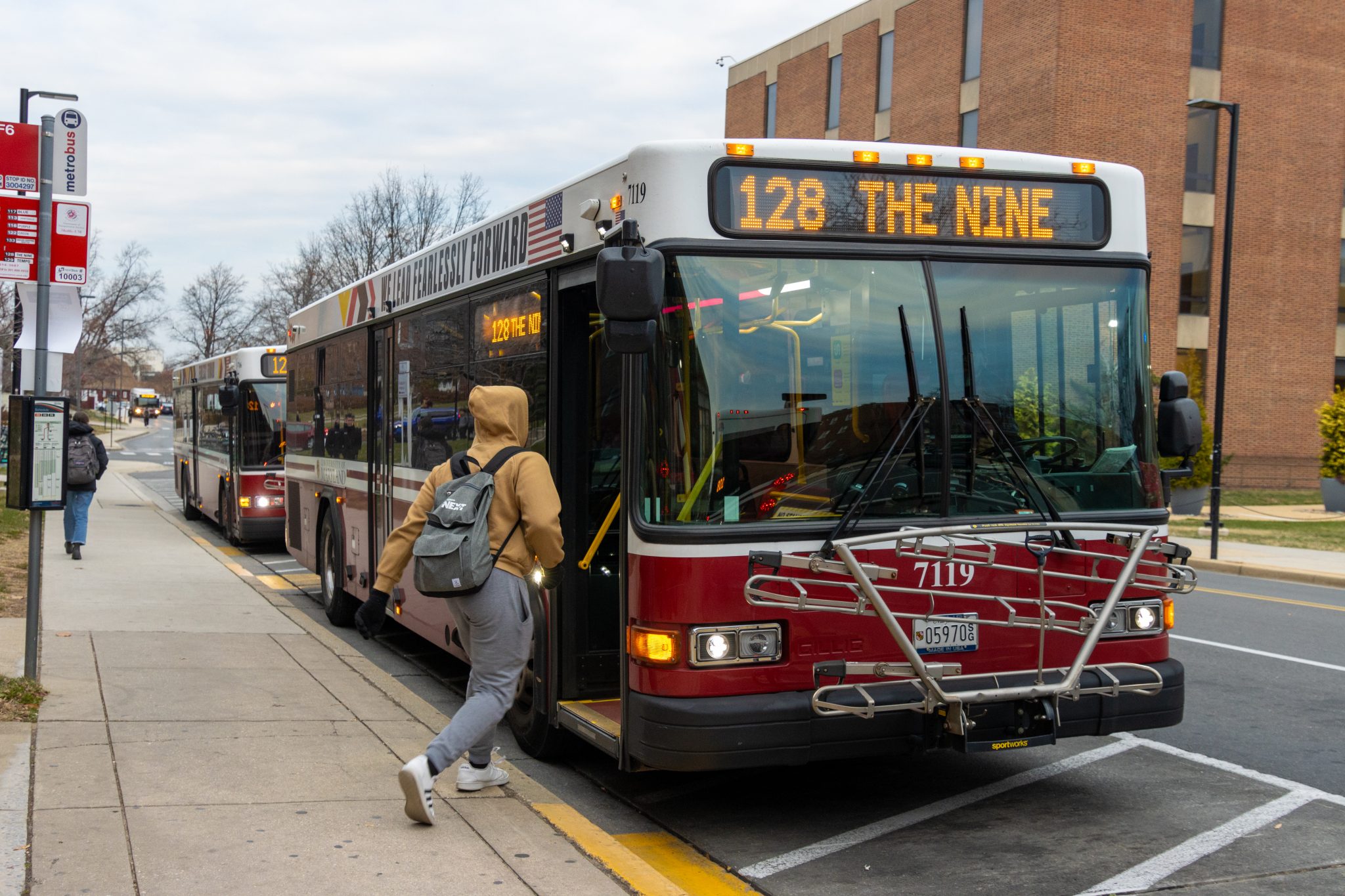University of Maryland community members are divided on how to mitigate DOTS’ financial deficit without cutting shuttle services.
The Department of Transportation Services is proposing a 16.4 percent student fee increase to “balance the books” for years ahead, according to DOTS executive director David Allen.
The proposed fee increase would cost each student about an additional $44, according to university vice president and chief administrative officer Carlo Colella.
In recent years, this university’s DOTS requested similar fee increases, but the fee increases have averaged about five percent. This year’s substantial fee increase is necessary to prevent cutting some Shuttle-UM bus routes, Colella said.
About 10 percent of the proposed hike will cover mandatory expenses, such as employee salaries and maintenance. The remaining six percent will balance the budget overall and prevent DOTS from adding to the accumulated deficit, Allen said.
Allen said DOTS made an effort in past years to mitigate fee increases by choosing not to hire for vacant positions. But these mitigation measures will not be possible this year, Allen added.
“We didn’t have enough last year to pay the bills and we didn’t reduce service, and we don’t want to do that,” Allen said. “That is not in the cards for this year. Some type of increased revenue or reduction in expenses … have to happen now.”
Since 2019, DOTS has accumulated $7 million in debt with the COVID-19 pandemic’s aftermath accounting for a substantial share of the budget shortfall. In 2019, DOTS earned about $18 million in total revenue. But in 2021, the department’s revenue halved to nearly $9 million.
[UMD DOTS delays seeking funding for Bikeways Project]
DOTS is a “self-supporting” department, meaning it does not receive funding from the state or student tuition. To pay off its accumulated debt, DOTS must generate its own revenue, according to the department’s 2021 annual report.
Allen said DOTS also has to account for a 20 percent salary increase for its entire department. Salaries account for about 70 percent of shuttle operation expenses, according to Colella.
To address the deficit and prevent cutting Shuttle-UM bus routes while paying for employees, Colella said the department needs additional resources.
Some students at this university expressed concerns over the potential reduction in Shuttle-UM routes.
Zoe Brunton, a freshman physics and astronomy major, said she uses the shuttle buses to go to class from her North Campus dorm. Fewer shuttle buses would be an accessibility issue for students who cannot always rely on walking, Brunton said.
“I think having less buses would just be a general negative all around,” Brunton said.
Jackie Sin, a sophomore chemistry major, lives in the Courtyards apartment complex, which she said is at least a 20 minute walk from the main areas of this university’s campus. As a result, Sin uses the shuttle buses to travel around College Park, she said.
Sin said the potential cuts to shuttle routes are “annoying,” especially for students living in Courtyards, who need more frequent routes due to living farther away from campus.
[UMD DOTS hopes new bike racks will alleviate overcrowded micromobility parking]
Several student organizations, including the Student Government Association, Residence Hall Association and Terps for Bike Lanes, also collaborated to write a letter in opposition to the fee increase.
“Relying solely on successive double-digit increases in mandatory fees is an unsustainable approach to resolving DOTS’s financial woes,” the letter read.
The letter amassed signatures from 21 students and Hiroyuki Iseki, an urban studies and planning associate professor and member of the Campus Transportation Advisory Committee. The SGA passed legislation last Wednesday that endorses the letter.
The letter proposed alternative funding sources, such as seeking grants from the Maryland General Assembly and the Maryland Department of Transportation.
The letter also objected to potentially cutting Shuttle-UM routes, and argued that DOTS would be unjustified in possibly cutting routes.
“It is frankly unacceptable for a flagship public university of this size to witness a decade-long, year-after-year decline in shuttle service quality due to the absence of fiscal support,” the letter read.



